Laurent Risser
IMT
Biomechanical Constraints Assimilation in Deep-Learning Image Registration: Application to sliding and locally rigid deformations
Apr 07, 2025Abstract:Regularization strategies in medical image registration often take a one-size-fits-all approach by imposing uniform constraints across the entire image domain. Yet biological structures are anything but regular. Lacking structural awareness, these strategies may fail to consider a panoply of spatially inhomogeneous deformation properties, which would faithfully account for the biomechanics of soft and hard tissues, especially in poorly contrasted structures. To bridge this gap, we propose a learning-based image registration approach in which the inferred deformation properties can locally adapt themselves to trained biomechanical characteristics. Specifically, we first enforce in the training process local rigid displacements, shearing motions or pseudo-elastic deformations using regularization losses inspired from the field of solid-mechanics. We then show on synthetic and real 3D thoracic and abdominal images that these mechanical properties of different nature are well generalized when inferring the deformations between new image pairs. Our approach enables neural-networks to infer tissue-specific deformation patterns directly from input images, ensuring mechanically plausible motion. These networks preserve rigidity within hard tissues while allowing controlled sliding in regions where tissues naturally separate, more faithfully capturing physiological motion. The code is publicly available at https://github.com/Kheil-Z/biomechanical_DLIR .
Debiasing Machine Learning Models by Using Weakly Supervised Learning
Feb 23, 2024Abstract:We tackle the problem of bias mitigation of algorithmic decisions in a setting where both the output of the algorithm and the sensitive variable are continuous. Most of prior work deals with discrete sensitive variables, meaning that the biases are measured for subgroups of persons defined by a label, leaving out important algorithmic bias cases, where the sensitive variable is continuous. Typical examples are unfair decisions made with respect to the age or the financial status. In our work, we then propose a bias mitigation strategy for continuous sensitive variables, based on the notion of endogeneity which comes from the field of econometrics. In addition to solve this new problem, our bias mitigation strategy is a weakly supervised learning method which requires that a small portion of the data can be measured in a fair manner. It is model agnostic, in the sense that it does not make any hypothesis on the prediction model. It also makes use of a reasonably large amount of input observations and their corresponding predictions. Only a small fraction of the true output predictions should be known. This therefore limits the need for expert interventions. Results obtained on synthetic data show the effectiveness of our approach for examples as close as possible to real-life applications in econometrics.
TaCo: Targeted Concept Removal in Output Embeddings for NLP via Information Theory and Explainability
Dec 11, 2023
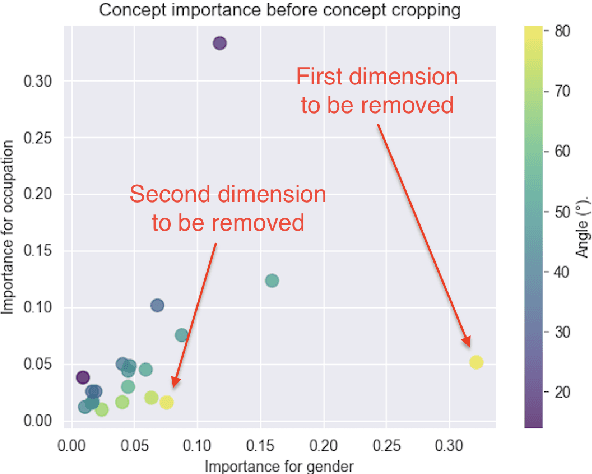
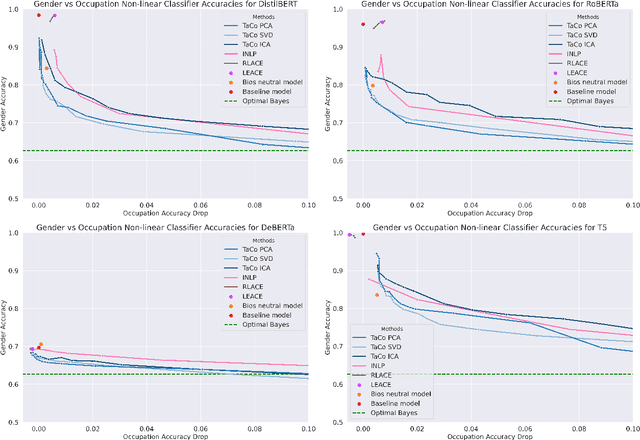
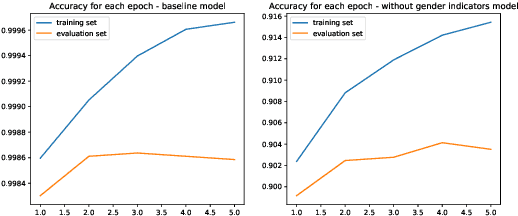
Abstract:The fairness of Natural Language Processing (NLP) models has emerged as a crucial concern. Information theory indicates that to achieve fairness, a model should not be able to predict sensitive variables, such as gender, ethnicity, and age. However, information related to these variables often appears implicitly in language, posing a challenge in identifying and mitigating biases effectively. To tackle this issue, we present a novel approach that operates at the embedding level of an NLP model, independent of the specific architecture. Our method leverages insights from recent advances in XAI techniques and employs an embedding transformation to eliminate implicit information from a selected variable. By directly manipulating the embeddings in the final layer, our approach enables a seamless integration into existing models without requiring significant modifications or retraining. In evaluation, we show that the proposed post-hoc approach significantly reduces gender-related associations in NLP models while preserving the overall performance and functionality of the models. An implementation of our method is available: https://github.com/fanny-jourdan/TaCo
Toulouse Hyperspectral Data Set: a benchmark data set to assess semi-supervised spectral representation learning and pixel-wise classification techniques
Nov 15, 2023Abstract:Airborne hyperspectral images can be used to map the land cover in large urban areas, thanks to their very high spatial and spectral resolutions on a wide spectral domain. While the spectral dimension of hyperspectral images is highly informative of the chemical composition of the land surface, the use of state-of-the-art machine learning algorithms to map the land cover has been dramatically limited by the availability of training data. To cope with the scarcity of annotations, semi-supervised and self-supervised techniques have lately raised a lot of interest in the community. Yet, the publicly available hyperspectral data sets commonly used to benchmark machine learning models are not totally suited to evaluate their generalization performances due to one or several of the following properties: a limited geographical coverage (which does not reflect the spectral diversity in metropolitan areas), a small number of land cover classes and a lack of appropriate standard train / test splits for semi-supervised and self-supervised learning. Therefore, we release in this paper the Toulouse Hyperspectral Data Set that stands out from other data sets in the above-mentioned respects in order to meet key issues in spectral representation learning and classification over large-scale hyperspectral images with very few labeled pixels. Besides, we discuss and experiment the self-supervised task of Masked Autoencoders and establish a baseline for pixel-wise classification based on a conventional autoencoder combined with a Random Forest classifier achieving 82% overall accuracy and 74% F1 score. The Toulouse Hyperspectral Data Set and our code are publicly available at https://www.toulouse-hyperspectral-data-set.com and https://www.github.com/Romain3Ch216/tlse-experiments, respectively.
Are fairness metric scores enough to assess discrimination biases in machine learning?
Jun 08, 2023Abstract:This paper presents novel experiments shedding light on the shortcomings of current metrics for assessing biases of gender discrimination made by machine learning algorithms on textual data. We focus on the Bios dataset, and our learning task is to predict the occupation of individuals, based on their biography. Such prediction tasks are common in commercial Natural Language Processing (NLP) applications such as automatic job recommendations. We address an important limitation of theoretical discussions dealing with group-wise fairness metrics: they focus on large datasets, although the norm in many industrial NLP applications is to use small to reasonably large linguistic datasets for which the main practical constraint is to get a good prediction accuracy. We then question how reliable are different popular measures of bias when the size of the training set is simply sufficient to learn reasonably accurate predictions. Our experiments sample the Bios dataset and learn more than 200 models on different sample sizes. This allows us to statistically study our results and to confirm that common gender bias indices provide diverging and sometimes unreliable results when applied to relatively small training and test samples. This highlights the crucial importance of variance calculations for providing sound results in this field.
COCKATIEL: COntinuous Concept ranKed ATtribution with Interpretable ELements for explaining neural net classifiers on NLP tasks
May 14, 2023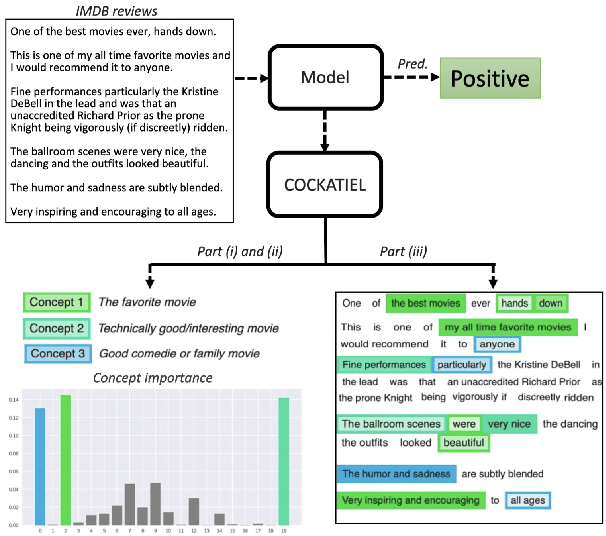
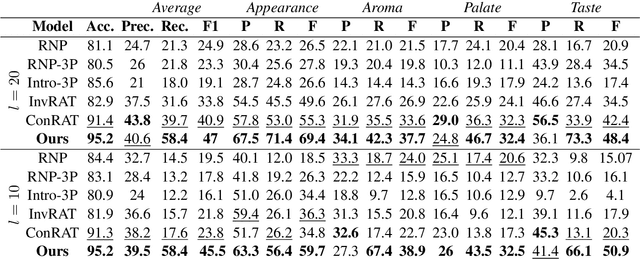

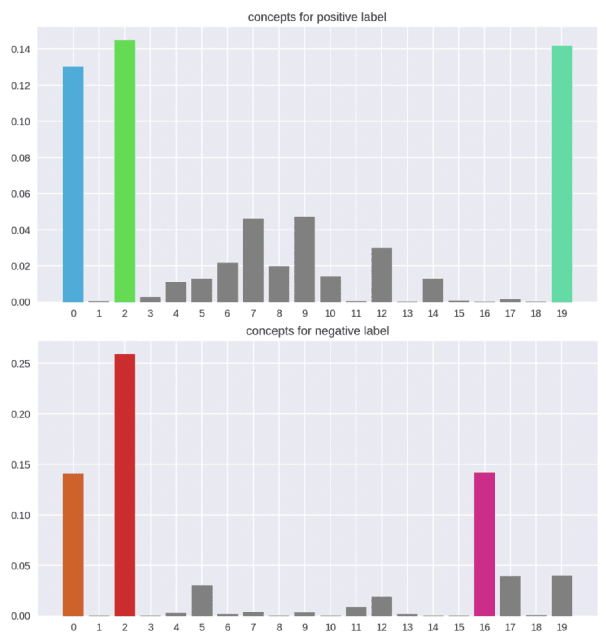
Abstract:Transformer architectures are complex and their use in NLP, while it has engendered many successes, makes their interpretability or explainability challenging. Recent debates have shown that attention maps and attribution methods are unreliable (Pruthi et al., 2019; Brunner et al., 2019). In this paper, we present some of their limitations and introduce COCKATIEL, which successfully addresses some of them. COCKATIEL is a novel, post-hoc, concept-based, model-agnostic XAI technique that generates meaningful explanations from the last layer of a neural net model trained on an NLP classification task by using Non-Negative Matrix Factorization (NMF) to discover the concepts the model leverages to make predictions and by exploiting a Sensitivity Analysis to estimate accurately the importance of each of these concepts for the model. It does so without compromising the accuracy of the underlying model or requiring a new one to be trained. We conduct experiments in single and multi-aspect sentiment analysis tasks and we show COCKATIEL's superior ability to discover concepts that align with humans' on Transformer models without any supervision, we objectively verify the faithfulness of its explanations through fidelity metrics, and we showcase its ability to provide meaningful explanations in two different datasets.
How optimal transport can tackle gender biases in multi-class neural-network classifiers for job recommendations?
Feb 27, 2023Abstract:Automatic recommendation systems based on deep neural networks have become extremely popular during the last decade. Some of these systems can however be used for applications which are ranked as High Risk by the European Commission in the A.I. act, as for instance for online job candidate recommendation. When used in the European Union, commercial AI systems for this purpose will then be required to have to proper statistical properties with regard to potential discrimination they could engender. This motivated our contribution, where we present a novel optimal transport strategy to mitigate undesirable algorithmic biases in multi-class neural-network classification. Our stratey is model agnostic and can be used on any multi-class classification neural-network model. To anticipate the certification of recommendation systems using textual data, we then used it on the Bios dataset, for which the learning task consists in predicting the occupation of female and male individuals, based on their LinkedIn biography. Results show that it can reduce undesired algorithmic biases in this context to lower levels than a standard strategy.
p$^3$VAE: a physics-integrated generative model. Application to the semantic segmentation of optical remote sensing images
Oct 19, 2022



Abstract:The combination of machine learning models with physical models is a recent research path to learn robust data representations. In this paper, we introduce p$^3$VAE, a generative model that integrates a perfect physical model which partially explains the true underlying factors of variation in the data. To fully leverage our hybrid design, we propose a semi-supervised optimization procedure and an inference scheme that comes along meaningful uncertainty estimates. We apply p$^3$VAE to the semantic segmentation of high-resolution hyperspectral remote sensing images. Our experiments on a simulated data set demonstrated the benefits of our hybrid model against conventional machine learning models in terms of extrapolation capabilities and interpretability. In particular, we show that p$^3$VAE naturally has high disentanglement capabilities. Our code and data have been made publicly available at https://github.com/Romain3Ch216/p3VAE.
A survey of Identification and mitigation of Machine Learning algorithmic biases in Image Analysis
Oct 10, 2022

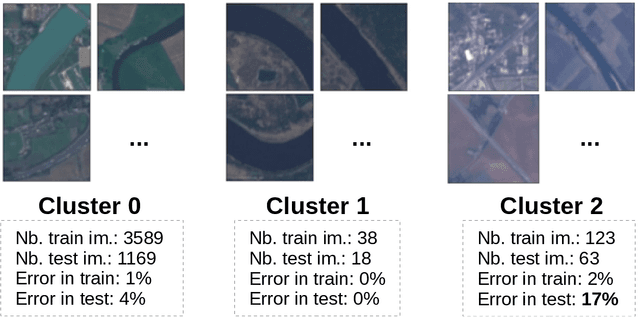
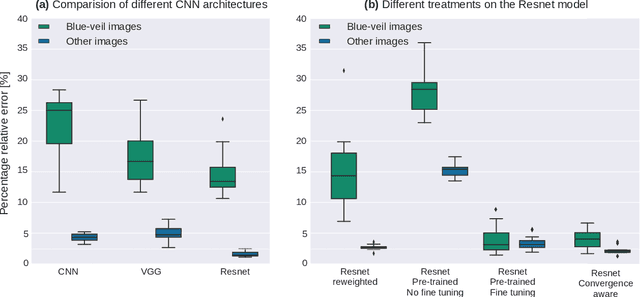
Abstract:The problem of algorithmic bias in machine learning has gained a lot of attention in recent years due to its concrete and potentially hazardous implications in society. In much the same manner, biases can also alter modern industrial and safety-critical applications where machine learning are based on high dimensional inputs such as images. This issue has however been mostly left out of the spotlight in the machine learning literature. Contrarily to societal applications where a set of proxy variables can be provided by the common sense or by regulations to draw the attention on potential risks, industrial and safety-critical applications are most of the times sailing blind. The variables related to undesired biases can indeed be indirectly represented in the input data, or can be unknown, thus making them harder to tackle. This raises serious and well-founded concerns towards the commercial deployment of AI-based solutions, especially in a context where new regulations clearly address the issues opened by undesired biases in AI. Consequently, we propose here to make an overview of recent advances in this area, firstly by presenting how such biases can demonstrate themselves, then by exploring different ways to bring them to light, and by probing different possibilities to mitigate them. We finally present a practical remote sensing use-case of industrial Fairness.
A survey of bias in Machine Learning through the prism of Statistical Parity for the Adult Data Set
Apr 06, 2020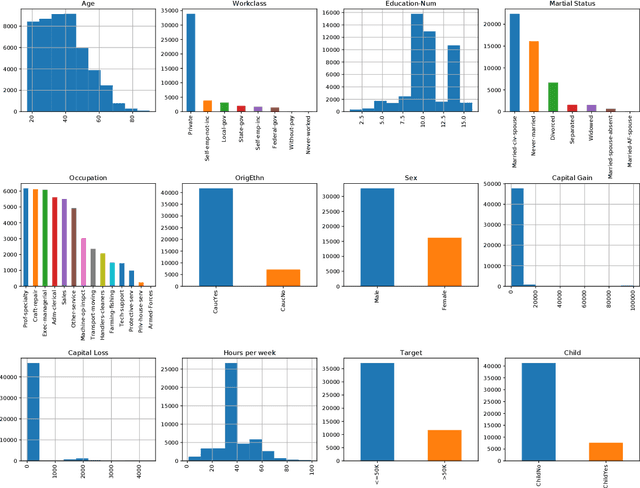


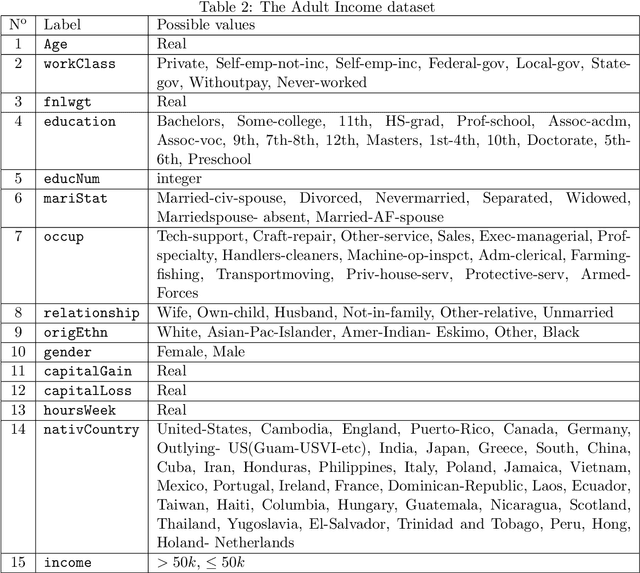
Abstract:Applications based on Machine Learning models have now become an indispensable part of the everyday life and the professional world. A critical question then recently arised among the population: Do algorithmic decisions convey any type of discrimination against specific groups of population or minorities? In this paper, we show the importance of understanding how a bias can be introduced into automatic decisions. We first present a mathematical framework for the fair learning problem, specifically in the binary classification setting. We then propose to quantify the presence of bias by using the standard Disparate Impact index on the real and well-known Adult income data set. Finally, we check the performance of different approaches aiming to reduce the bias in binary classification outcomes. Importantly, we show that some intuitive methods are ineffective. This sheds light on the fact trying to make fair machine learning models may be a particularly challenging task, in particular when the training observations contain a bias.
 Add to Chrome
Add to Chrome Add to Firefox
Add to Firefox Add to Edge
Add to Edge